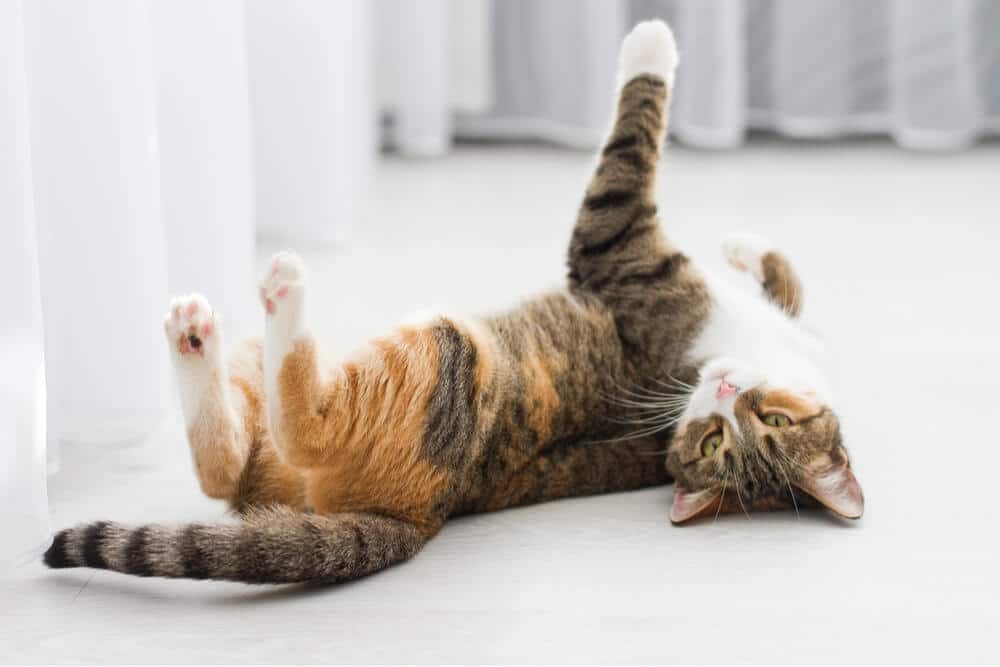Blog
Why Do Cats Scratch Furniture? Simple and Effective Tips to Handle It
Cats are beloved companions for many households, providing joy, laughter, and a sense of calm with their graceful movements and playful antics. However, one common feline behavior that can spark frustration among cat owners is scratching furniture. If you’ve ever walked into your living room only to discover your prized armchair looking like it has been through the claws of a cat-tornado, you might be left wondering why cats scratch, and more importantly, what you can do to manage this natural behavior. In this blog post, we will explore the reasons behind this instinctual acting out and offer practical tips for mitigating the damage.
Understanding the Reasons Behind Scratching
1. Natural Instincts
Scratching is a natural and instinctive behavior for cats. In the wild, felines scratch surfaces to mark their territory, leaving both a visual and scent-based mark to notify other cats of their presence. Domestic cats retain these instincts, and scratching serves as a way for them to communicate with the world around them.
>>> Buy now: Autumn Maple Leaf Cat 3d All Print Hoodie, Zip-up Hoodie
2. Claw Maintenance
Scratching is essential for a cat’s claw health. The process helps to remove the outer sheath from their claws, keeping them sharp and trimmed. Without scratching, a cat’s claws can become overgrown, leading to discomfort or health issues.
3. Stretching and Exercise
Cats are natural athletes; scratching provides them with a full-body stretch that helps keep their muscles agile and promotes overall physical health. When a cat stretches and scratches, they engage multiple muscle groups, contributing to their well-being.
4. Stress Relief
Much like humans might fidget or stretch when feeling anxious, cats use scratching as a way to relieve stress or express frustration. In certain situations, such as the introduction of a new pet or a change in household dynamics, cats may scratch furniture to cope with their feelings.
5. Boredom and Lack of Stimulation
Cats are intelligent creatures that require mental and physical stimulation to stay happy. If a cat doesn’t receive enough interaction, playtime, or environmental enrichment, they may turn to scratching as a means of entertainment or to release pent-up energy.
Tips to Manage Furniture Scratching
While scratching is a natural behavior, there are myriad ways to deter your cat from ruining your furniture. Here are some effective strategies:
1. Provide Appropriate Scratching Surfaces
One of the simplest and most effective solutions is to invest in scratching posts or pads. Make sure these alternatives are constructed from materials irresistible to your cat, like sisal or cardboard. You can place them near furniture that your cat currently scratches, tempting them to engage with the designated scratching surface instead.
2. Encourage Positive Scratching Behavior
Whenever you see your cat using their scratching post, reward them with treats, verbal praise, or affection. This positive reinforcement will help them associate scratching their post with positive experiences, making it more likely they’ll choose it over your couch.
3. Use Deterrents on Furniture
To discourage your cat from scratching specific furniture, consider using deterrents. Double-sided tape, for instance, can be particularly effective; cats dislike the sticky texture on their paws. There are also commercial sprays available that are designed to deter scratching.
4. Regular Claw Maintenance
Keeping your cat’s claws trimmed can minimize the extent of the damage. Regular clipping can ensure that, even if your cat does scratch your furniture, the harm inflicted is less severe. If you’re unsure how to trim your cat’s claws, a veterinarian or professional groomer can provide guidance.
5. Create a Stimulating Environment
To address potential boredom or lack of stimulation, create an enriching environment for your cat. This can include interactive toys, catnip-filled items, or puzzle feeders that require effort to obtain treats. Regular playtime with your cat can also help expend excess energy, reducing the likelihood of destructive scratching behavior.
6. Redirect with Toys
If you catch your cat scratching furniture, gently redirect their attention to a more appropriate alternative. A toy or a scratching post nearby can often lure them away from the furniture while allowing you to remain calm and in control.
7. Consider the Location of Scratching Posts
Cats can be particular about their territory. Ensure that the scratching posts are placed in areas where your cat feels safe and comfortable. They may prefer locations near their sleeping spaces or areas where they tend to spend the most time.
8. Utilize Feline Pheromones
Feline pheromones can be effective in reducing stress and anxiety in cats, potentially decreasing inappropriate scratching. These products mimic natural feline pheromones and can create a calming environment. Consider diffusers or sprays specifically designed for this purpose.
Scratching is a natural behavior for our feline friends, and finding a balance between your cat’s instinct and your home’s decor can seem challenging. By understanding the reasons behind scratching and applying some simple, effective strategies, you can protect your furniture while allowing your cat to express themselves healthily and safely. Remember, patience is key as you implement these methods; with time and positive reinforcement, your cat can learn to scratch appropriately without sacrificing your favorite chair in the process.
If scratching continues to be an issue despite your best efforts, consulting with a veterinarian or a feline behaviorist may provide additional insight. After all, a happy cat means a happy home!




